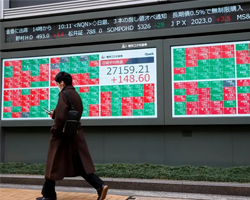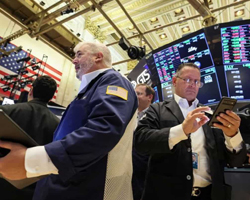Markets Tumble After the Fed Decision | Daily Market Analysis

Key events:
UK - Composite PMI (Oct)
UK - Services PMI (Oct)
UK - BoE Interest Rate Decision (Nov)
UK - BoE Gov Bailey Speaks
USA - Initial Jobless Claims
USA - ISM Non-Manufacturing PMI (Oct)
UK - BoE Gov Bailey Speaks
The U.S. interest rate was increased by 75 bp. - no surprises here. The Fed chief's words on further rate hikes also cannot be seen as a tightening of rhetoric. On the contrary, Mr. Powell's speech was seemingly "dovish". At least, at the very beginning. One phrase about "determining the pace of future increases in the target range" is worth mentioning. Markets rallied on the Fed's decision, but the press conference sobered everyone up, and markets headed down.
The S&P 500 broke out the uptrend line on the hourly chart after the press conference, which had been rising since the last local low of October 13, which was the index's lowest since November 2020.

Nor did Bitcoin, which had seemed stable of late after the price came out of a downtrend on the chart (but not on fundamentals). True, the drop still looks small so far.

It is important to note that crypto and the stock market are reacting this way to the U.S. Fed's decision because they fear that with rising interest rates, funding conditions in the markets will rise, which will reduce costs and in parallel increase the yields of risk-free assets such as Treasuries.
In addition, as interest rates and funding conditions rise, so does liquidity in the economy, which proves the rise in the U.S. dollar index, as investors go into the dollar and ignore risky assets.

But liquidity in the market will have to wait a long time, as after the U.S. Federal Reserve raised interest rates by 0.75% for the fourth consecutive meeting, the head of the U.S. Federal Reserve said at a press conference that it may take determination and patience to lower inflation. Moreover, the head of the U.S. Fed said that the data suggests that the Fed may move to higher levels than they thought at the September meeting. It turns out that while the Fed has hinted at a possible policy change, it has also signaled a revision to the rate forecast in favor of growth.
But the thing is, investors can't interpret Powell's words one way or the other, as the Fed chief created room for any decision in December, either in favor of a 0.75% rate hike or a rate cut to 0.5%.
For example, before the Nov. 2 rate decision, the futures markets assumed a 48.7% probability of a 0.75% rate hike in December, but after the Fed's decision, the probability of a 0.75% rate hike dropped to 43.2%, and markets still fell.
Most likely, the markets/investors are starting to get the message that the U.S. Fed is not going to change policy and suspend rate hikes. By the way, Powell said so at the press conference: it is too early to talk about a pause in rate hikes.
The main reason why the U.S. Fed will continue to keep interest rates high is the labor market, as it is incredibly strong. Unemployment in the U.S. is at 3.5%, even though U.S. Fed rates have reached 3.75-4%.
A rise in interest rates must be accompanied by a weakening of the labor market because demand in the economy is falling, which means that demand for labor is falling as well. Lower labor demand should lower wages or inhibit wage growth, which ultimately slows inflation (as does demand in the economy). But the biggest problem for the U.S. Fed is that conditions in the economy have changed. Pay attention to the chart below:

Whereas before the global financial crisis, interest rate increases controlled the labor market, afterward the labor market completely backfired. Since 2016, the interest rate has been rising and unemployment has continued to fall. After the pandemic distortions, the labor market remains strong and the interest rate is already 4%. It turns out that the U.S. Federal Reserve is no longer fully influencing the labor market. Although it notes concerns about it.
Based on labor market problems, the U.S. Fed would either have to keep raising interest rates at a higher rate for core inflation to start falling since inflation could persist for a longer time due to a tight labor market, which would be difficult to cool down due to the usual labor supply shortage. But by doing so, the Fed risks driving the economy into a serious recession.
If we look at the S&P 500, things are much more complicated. Since the Fed is unlikely to be able to put the economy on a soft landing, it is even more difficult to predict the depth of the decline here, as everything will depend on the contraction of the real economy and demand within it. Obviously, the index will go down to the previous low of 3580 and if it goes below that, the next support level will be around the pre-pandemic high of 3400, but given the trends in the economy, it is not certain that 3400 will be the bottom.
The fact is that the U.S. Fed has said that the opportunity for a soft landing has shrunk. Amid high inflation, the Fed will not roll over in monetary policy and let the recession work in favor of slowing inflation. The main problem will be that if the economy shrinks in a strong labor market, the economy may simply not have enough labor to get out of recession quickly without reigniting inflation. Moreover, geopolitical risks can only exacerbate the economic downturn and the downturn in the markets, which will be extremely negative for the stock market.









